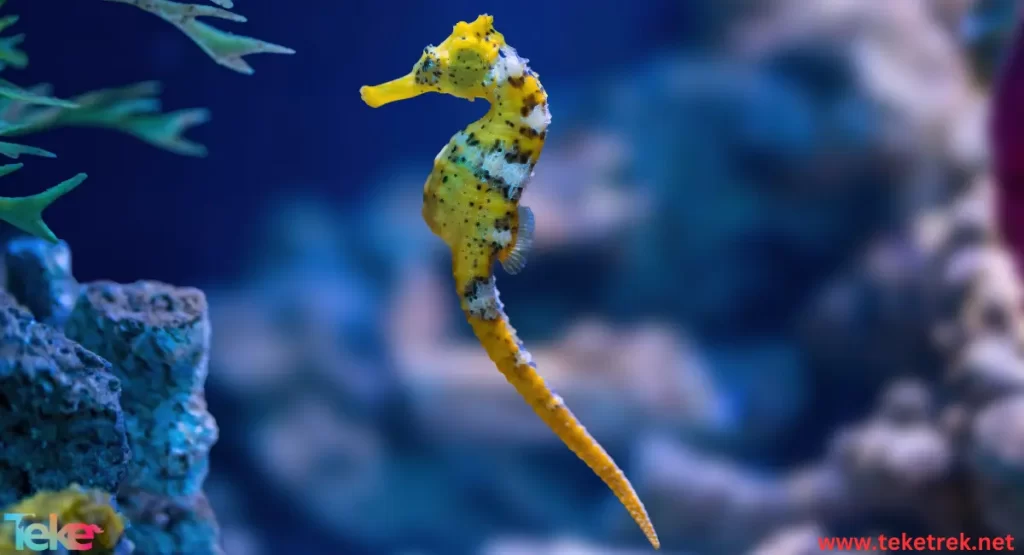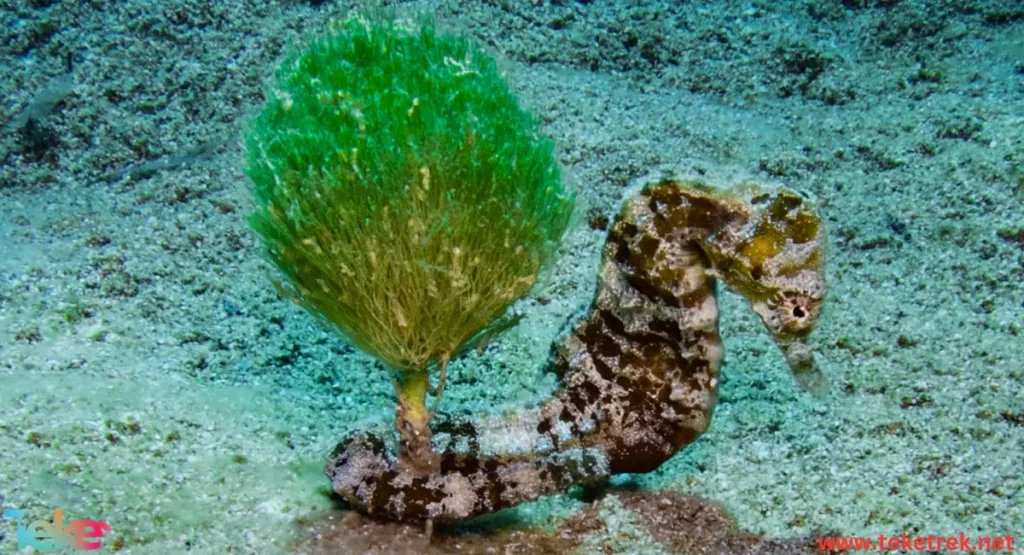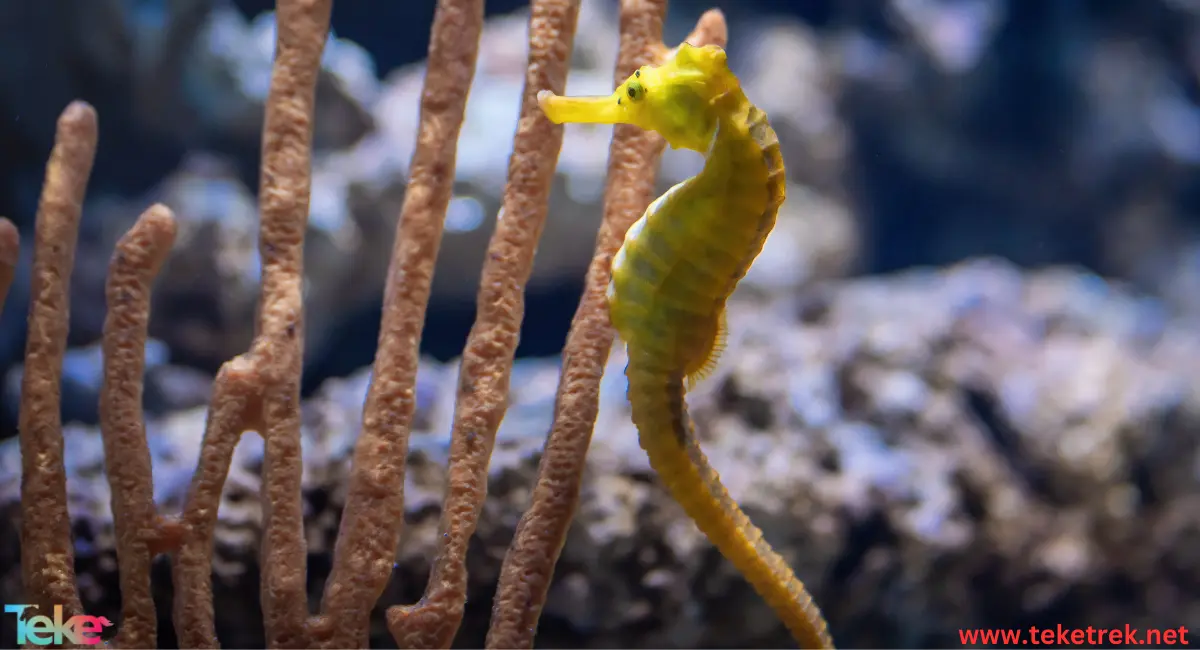The Brazilian seahorse is one of the most interesting and surprising marine creatures in the ocean world.
These creatures are distinguished by their unique beauty and bright colors that attract the attention of many. It is also an important part of the biological diversity in the oceans, and plays a crucial role in the ecological balance system.
In addition to its role in environmental balance, the seahorse is one of the most widely used species of creatures for commercial purposes. In this article from teketrek, we will inform you of the characteristics of this animal and the most important information that you must be looking for.

About the Brazilian seahorse
Seahorse is a genus of fish belonging to the seapiper family and order of seapiper, phylum Chordata.
There are more than 32 species, and it is found mainly in tropical and medium waters.
The Brazilian seahorse lives in coastal areas of the oceans, where it is an important food source for many species of fish and aquatic mammals.
Locations of Brazilian seahorses
The sea horse lives in shallow coastal waters in latitudes from about 52 degrees north to 45 degrees south. It is also endemic in the Pacific and Indian Oceans and the opposite coasts of southern Australia and New Zealand
Seahorses prefer coral reefs, mangroves, seagrass beds, and estuaries, which are ideal places for the hippopotamus to live.
The diet of the Brazilian seahorse
These creatures feed on a variety of foods such as algae and small fish, making them an essential part of the food chain.
Seahorses feed on small fish, small shrimp, and plankton.
Brazilian seahorse species
There are several types of Brazilian seahorses, which differ in certain points. Here are the most important:
Big-Bellied or Pot bellied Seahorse:
The Brazilian seahorse is also called the bowl-bellied seahorse.
One of the largest species of sea horses that lives off the coast of Australia and New Zealand.
It has the ability to grow to a length of 35 cm.
The appearance of this species is characterized by the presence of a large abdomen in the front of their bodies, which is noticeably prominent in males.
The big-bellied seahorse is characterized by the presence of a large number of bony rings, the number of which ranges from 12 to 13 rings.
The big-bellied seahorse has dark spots on its head, tail, and dorsal fin.
Longsnout Seahorse:
It is a type of sea horse that lives in the western North Atlantic Ocean.
Its length reaches 17 cm.
The slender seahorse is distinguished by its long, slender nose.
The slender seahorse has white and brown spots on its skin.
There are about 11 bony rings around the trunk and 31 to 39 rings around the tail area.
Dwarf Seahorse:
The Brazilian seahorse is also called the baby seahorse.
This type of seahorse lives in the shallow waters of the western Atlantic Ocean, the Gulf of Mexico, and southern Florida.
The dwarf seahorse is one of the smallest species of seahorse, reaching a length of 5.0 cm.
The dwarf seahorse’s body is covered with small wart-like bumps.
The dwarf seahorse has approximately 9 to 10 bony rings around the trunk and 31 to 32 rings around the tail area.
In addition to the following types:
Hippocampus kuda
West Australian seahorse Tiger snout seahorse
Denise’s pygmy seahorse
Patagonian seahorse Hippocampus patagonicus
Narrow-bellied seahorse
Pacific seahorse
Giraffe seahors
Barbour’s seahorse
Satomi’s pygmy seahorse
Pontoh’s pygmy seahorse
Spiny seahorse Spiny seahorse
Algerian seahorse West African seahorse
Little seahorse Bargibant’s seahors
Jayakar’s seahorse
high-crown seahorse
Long-snouted seahorse
Great seahorse
Reproduction stages of Brazilian seahorses
When the female Brazilian seahorse is ready to reproduce, she goes to the male and deposits her eggs in the pouch that the male has on the ventral side.
The number of eggs she lays ranges from 50-150 eggs. In this sac, the eggs receive the food and oxygen necessary for full growth.
The duration of pregnancy lasts from 14 days to approximately 4 weeks, and the duration of the birth process is approximately 12 hours, after which the young seahorses go immediately into the water.

What are the most important benefits of Brazilian seahorse?
The Brazilian seahorse is an important marine species that is beneficial to the environment and humans:
The Brazilian seahorse is an essential part of the ocean ecosystem, contributing to ecosystem balance and promoting biodiversity.
It is considered an important source of food for ocean predators, such as fish, snakes and birds.
Brazilian seahorse is commonly used in the cosmetic and health industry, with seahorse oil used as a main ingredient in some lotions.
The Brazilian seahorse is sometimes used as a natural decoration in aquariums, adding beauty to these shelters.
Seahorse shells are used as natural decoration, or as food items in some societies.
Brazilian seahorse is commonly used to treat some inflammatory conditions and joint pain, due to its ability to provide anti-inflammatory properties.
In conclusion, we have reviewed together the beauty and importance of the Brazilian seahorse, this wonderful marine creature that is considered a symbol of preserving biological diversity in the oceans.
It deserves to be respected and preserved, because it plays a vital role in the balance of the marine environment. Therefore, let us work together to protect it in order to ensure its continued existence and brilliance in the future.





